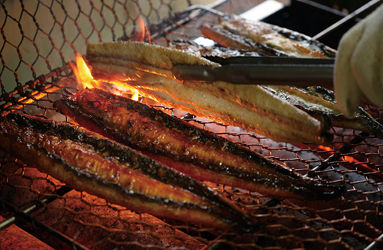TASTES

Dakbal
Chicken Tastes
ORIGIN → Seoul
DESCRIPTION
REVIEW
PLACE




Bibimbap
Rice Tastes
ORIGIN → South Korea
DESCRIPTION
Bibimbap is a staple in the Korean diet. Its literal translation is mixed (bibim) rice (bap).
Invariably, there there are infinite ways to create and serve the dish. Nonetheless, traditional Korean bibimbap is made using rice, an egg, fresh and fermented vegetables, gochujang (고추장, red chili paste), and often meat. Foreigners often liken bibimbap to a burrito bowl.
REVIEW
PLACE




Chikin / Chimaek
Chicken Tastes
ORIGIN → South Korea
Pre.ORIGIN → United States
DESCRIPTION
Chimaek (치맥; from Korean chikin 'fried chicken' and maekju 'beer') is a pairing of fried chicken (either plain huraideu or spicy yangnyeom) and beer, served as anju (English: food with alcohol) in the evening in many South Korean restaurants, including a number of specialized chains.
REVIEW
PLACE




Gilgeori Toast
Toast / Sandwich
ORIGIN → South Korea
DESCRIPTION
REVIEW
PLACE




Gyeranppang
Salty Pastry / Bakery
ORIGIN → South Korea
DESCRIPTION
REVIEW
PLACE




Jangeo Gui
Eel Tastes
ORIGIN → South Korea
DESCRIPTION
REVIEW
PLACE




Kimchi
Local Generic Tastes
ORIGIN → North Korea . South Korea
DESCRIPTION
REVIEW
PLACE




Korean BBQ
Grill / BBQ
ORIGIN → South Korea
DESCRIPTION
REVIEW
PLACE




Naengmyeon
Noodle / Varieties
ORIGIN → South Korea
Pre.ORIGIN → North Korea
DESCRIPTION
A noodle dish of northern Korean origin which consists of long and thin handmade noodles made from the flour and starch of various ingredients.
REVIEW
PLACE




Tteokbokki
Local Dish
ORIGIN → South Korea
DESCRIPTION
Tteokbokki literally means rice cake (“tteok” or 떡) that is stir-fried (“bokki” or 볶이).
The rice cakes are made by steaming finely ground white rice (though you can also sometimes find rice cakes made with brown rice). They are seasoned with a little salt and sometimes some sesame oil. They are naturally gluten free. The rice cakes themselves possess chewy texture (they’re not crunchy like Western style rice cakes!), similar to mochi or gnocchi. They have almost no discernible taste, which is why they are smothered in sauce.
The spicy tteokbokki sauce is made out of three main ingredients: gochujang (Korean chili paste), gochugaru (Korean chili flakes), and sweetener. It is thus spicy, savory, and a little a sweet, a little like the sauce for your pasta arrabbiata. While traditional tteokbokki is prepared with a spicy gravy or with soy sauce, these days, you can find all sorts of inventive sauces for tteokbokki, including rosé tteokbokki, jjajang tteokbokki, and curry tteokbokki.
REVIEW
PLACE




Yaki Imo
Local Generic Tastes
ORIGIN → China . Japan . North Korea . South Korea . Vietnam
DESCRIPTION
REVIEW
PLACE




Dakgalbi
Chicken Tastes
ORIGIN → Chuncheon
DESCRIPTION
Dakgalbi is a popular Korean dish, specifically a spicy stir-fried chicken dish, often made with marinated diced chicken, vegetables like cabbage and sweet potatoes, and a flavorful gochujang-based sauce. It's typically cooked at the table in a large skillet or cast iron pan and is meant to be shared, often eaten with lettuce leaves for wrapping.
REVIEW
PLACE




Eomuk (Odeng)
Local Dish
ORIGIN → Busan
DESCRIPTION
In Korea odeng and eomuk refer to exactly the same thing. Odeng is the borrowed word from Japan so Koreans have been trying to phase it out. Also as a side note, in Japan oden is the dish that has fish cakes in it, it doesn't refer to the fishcakes themselves, which they call kamaboko.
REVIEW
PLACE




Hotteok
Pancake / Varieties
ORIGIN → Busan
Pre.ORIGIN → China
DESCRIPTION
REVIEW
PLACE







